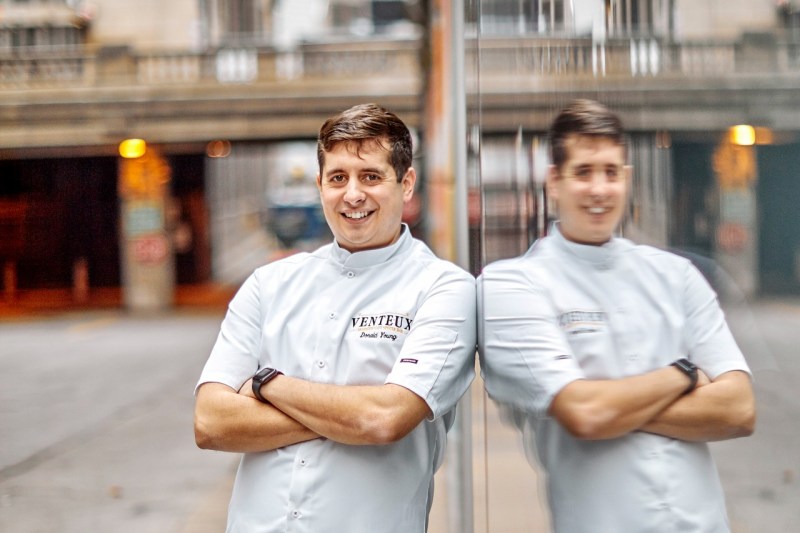
When you think of the top chefs in the universe, it’s easy to assume they eat well. Wouldn’t an accomplished culinary mind want to eat elevated fare, even away from the kitchen workplace?
Well, the answer is a bit of a yes and no. A complex dish can be just the thing, even off the clock. If nothing else, it’s easier for an award-winning chef to make a Croque Monsieur or Cioppino, just based on skillset alone. But even the best of the best aren’t necessarily above a good peanut butter and jelly sandwich or guilty pleasure snack from the machine down the hall.
We chatted up a few prominent chefs, all with at least a coveted Michelin star to their name, to see what they like to eat at home. In many ways, we got a brief peek into the fridges and pantries of these talented individuals. We came away equal parts enlightened and hungry.
Chef Matt Hobbs
Hobbs currently cooks at Christian Koepke’s highly regarded production studio-turned-eatery NORR Kitchen in Portland. Before, he was chef de cuisine at Rosa Rosa and executive sous chef at Michelin-starred Blue Duck Tavern in D.C.
“As the season turns to fall, one of my absolute go-to dishes for this time of year has to be my great grandmother’s Posole Verde,” Hobbs says. The dish is a rich salsa verde made with roasted tomatillos and pasilla chiles, pulled chicken, rich broth, hominy, and garnished with all the fixings such as radish, cilantro, onion, crema, cotija, serrano chiles, oregano, and lime. “Nothing pairs better with homemade tortillas,” he adds.
Chef Hobbs is also the first to admit he’s in love with sugar. “Chocolate chip cookies and saltwater taffy are two of my guilty go-to pleasures,” he admits. What about when the savory urge strikes? That’s when Hobbs whips up a batch of muhammara and homemade flatbread. The former is a spicy dip of Turkish origin made with walnuts, bell peppers, bread crumbs, and pomegranate molasses.
For sipping, Hobbs admits what he likes is a bit of a cliche. “Matcha latte,” he says.
Chef Donald Young

Venteux is one of Windy City’s newest and most exciting restaurants. Manning the kitchen is Donald Young, the youngest Chicago chef to ever be awarded a Michelin star. He’s a true Francophile and studied under Simon Scott at Saveurs. He’s also worked at Miramar Bistro, Les Nomades, and Temporis.
Chef David Costa
California has had a banner year for culinary achievements. This year, the Michelin Guide will feature 27 new star announcements in the Golden State. One of those was awarded to ADEGA in San Jose. It’s a Portuguese joint where Chef David Costa does his thing.
“Fall is one of the best seasons,” he says. “So many wonderful items become available this time of year.” In particular, Costa is s drawn to chestnuts and quince. On his days off, he likes roasting the latter, just like they do in Lisbon—over a live charcoal fire and eaten while hot.
With quince, Costa is all about the homemade marmelada. “It’s a labor of love, especially to get the right consistency,” he admits. “But chestnuts and marmelada go excellent with an old Tawny Port on a day off!”
Not going to argue with that. Now get into the kitchen and make yourself a snack, like the pros do.


